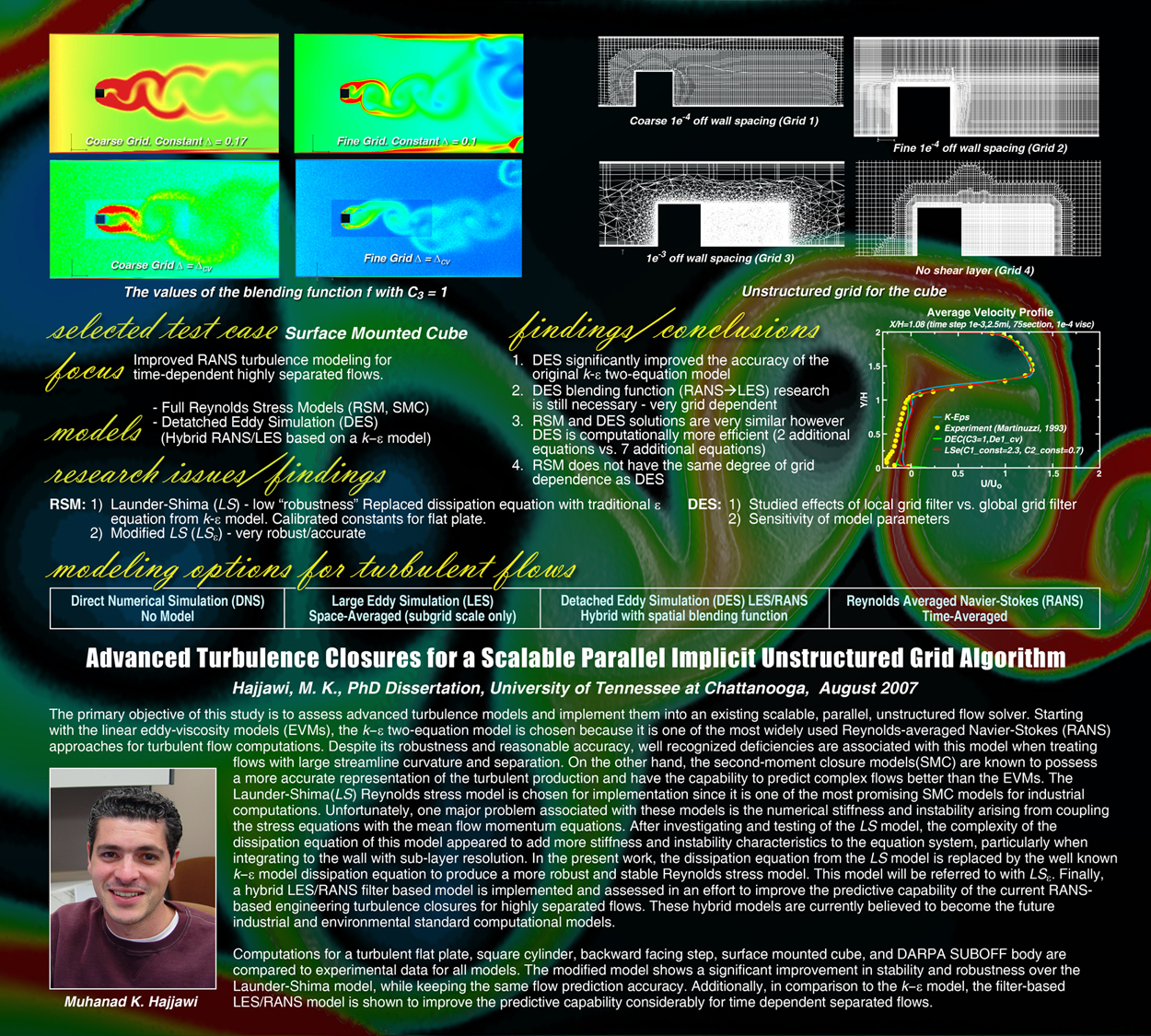Muhanad Hajjawi
Advanced Turbulence Closures for a Scalable Parallel Implicit Unstructured Grid Algorithm
A Dissertation Presented for the Doctor of Philosophy in Computational Engineering, The University of Tennessee at Chattanooga
Muhanad K. Hajjawi, August 2007
Abstract:
The primary objective of this study is to assess advanced turbulence models and implement them into an existing scalable, parallel, unstructured flow solver. Starting with the linear eddy-viscosity models(EVMs), the k−e two-equation model is chosen because it is one of the most widely used Reynolds-averaged Navier-Stokes (RANS) approaches for turbulent flow computations. Despite its robustness and reasonable accuracy, well recognized deficiencies are associated with this model when treating flows with large streamline curvature and separation. On the other hand, the second-moment closure models (SCMs) are known to possess a more accurate representation of the turbulent production and have the capability to predict complex flows better than the EVMs. The Launder-Shima (LS) Reynolds stress model is chosen for implementation since it is one of the most promising SCM models for industrial computations. Unfortunately, one major problem associated with these models is the numerical stiffness and instability arising from coupling the stress equations with the mean flow momentum equations. After investigating and testing of the LS model, the complexity of the dissipation equation of this model appeared to add more stiffness and instability characteristics to the equation system, particularly when integrating to the wall with sub-layer resolution. In the present work, the dissipation equation from the LS model is replaced by the well known k−e model dissipation equation to produce a more robust and stable Reynolds stress model. This model will be referred to with LSe. Finally, a hybrid LES/RANS filter based model is implemented and assessed in an effort to improve the predictive capability of the current RANS-based engineering turbulence closures for highly separated flows. These hybrid models are currently believed to become the future industrial and environmental standard computational models.
Computations for a turbulent flat plate, square cylinder, backward facing step, surface
mounted cube, and DARPA SUBOFF body are compared to experimental data for all models. The modified model shows a significant improvement in stability and robustness over the Launder-Shima model, while keeping the same flow prediction accuracy. Additionally, in comparison to the k−e model, the filtered-based LES/RANS model is shown to improve the predictive capability considerably for time dependent separated flows.
